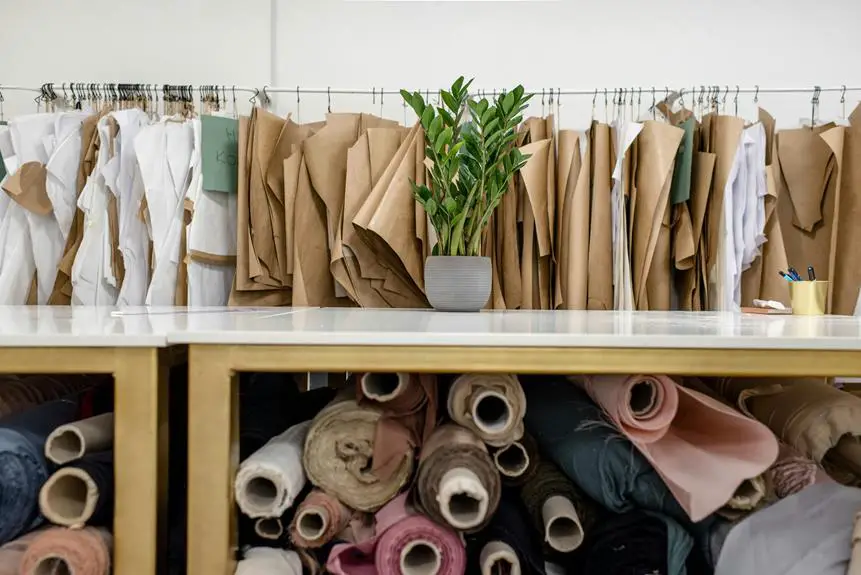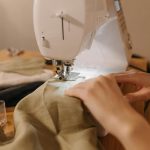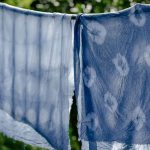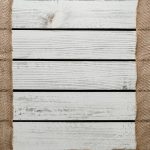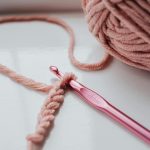When you think about cambric fabric, it's easy to overlook the intricate process that turns raw materials into this lightweight textile. It all starts with carefully selected cotton and linen fibers that undergo cleaning and carding. After that, these fibers are spun into yarn, which you might find surprising given the final product's delicate nature. But that's just the beginning. As you explore the weaving techniques and finishing treatments, you'll uncover how these steps contribute to cambric's unique qualities, leaving you to wonder about its various applications.
Table of Contents
Raw Materials Used
To create cambric fabric, manufacturers primarily use finely woven cotton or linen, ensuring a smooth and lightweight texture.
Cotton is the most common choice, thanks to its softness and breathability, making it perfect for garments and home textiles. Linen, on the other hand, adds a unique crispness and durability to the fabric, appealing to those who appreciate a more textured finish.
When selecting raw materials, manufacturers often prioritize high-quality fibers, as this directly impacts the fabric's final appearance and performance. Organic cotton has gained popularity for its environmental benefits and superior feel. If you prefer a luxurious touch, silk blends can also be incorporated, enhancing the fabric's sheen and drape.
In addition to the primary fibers, dyes and finishes are essential for achieving the desired color and texture. Natural dyes are often favored for their eco-friendliness, while synthetic options provide a broader color palette.
You might also encounter finishes that enhance softness or wrinkle resistance, further elevating the fabric's appeal.
Spinning Process
After selecting high-quality cotton or linen, the next step in creating cambric fabric involves the spinning process, where raw fibers are transformed into yarn. This process is essential to achieve the fine, smooth texture that cambric is known for.
You'll start by preparing the fibers, which involves cleaning and carding to separate and align them. Once you have the fibers ready, you'll move on to spinning. This is typically done using a spinning wheel or a modern spinning machine. The fibers are twisted and stretched to create long strands of yarn.
Here's a quick overview of the spinning process:
| Step | Description |
|---|---|
| 1. Preparation | Clean and card the fibers |
| 2. Spinning | Twist fibers to form yarn |
| 3. Winding | Wind the spun yarn onto spools |
| 4. Quality Check | Inspect yarn for consistency and strength |
| 5. Dyeing (optional) | Dye yarn if colored fabric is desired |
Understanding these steps helps you appreciate the craftsmanship involved in producing cambric fabric. A well-executed spinning process sets the foundation for high-quality fabric.
Weaving Techniques
Once the yarn is ready, it's time to explore the weaving techniques that transform it into the delicate cambric fabric you know and love. The primary method used for cambric is plain weave, where the warp and weft yarns intersect at right angles. This straightforward technique creates a tight, balanced structure, giving cambric its characteristic smoothness and lightness.
To start, the warp yarns are set up on a loom, running vertically. You then insert the weft yarn horizontally through the warp, using a shuttle. As you pass the shuttle back and forth, you're building the fabric layer by layer. This simple yet effective method results in a uniform texture, making cambric ideal for garments and household textiles.
You might also come across variations of the plain weave, such as a tighter or looser weave, depending on the desired end product. Each variation affects the fabric's drape and feel, allowing for creativity in design.
Finishing Treatments
Finishing treatments play a crucial role in enhancing cambric fabric's softness, durability, and overall appearance. These treatments not only improve the tactile experience but also increase the fabric's lifespan, making it more appealing for various uses.
Here's a quick overview of common finishing treatments for cambric:
| Treatment Type | Purpose | Effect on Fabric |
|---|---|---|
| Mercerization | Improves luster and dye affinity | Shinier and more vibrant |
| Calendering | Smooths surface and adds sheen | Sleek and glossy finish |
| Softening | Enhances fabric feel | Softer and more comfortable |
| Shrinkage Control | Minimizes post-wash shrinkage | Maintains original size |
Each of these treatments contributes to the overall quality of cambric fabric, ensuring it meets your needs. By applying these finishing techniques, manufacturers can deliver a product that is not only visually appealing but also functional. So, the next time you choose cambric, consider the finishing treatments that went into creating that perfect fabric. They truly make a difference!
Applications of Cambric Fabric
Cambric fabric is widely used in various applications, thanks to its lightweight, breathable qualities and refined finish.
You'll find it commonly used in clothing, especially in summer garments and children's wear. Its softness against the skin makes it an excellent choice for blouses, dresses, and nightwear. When you choose cambric for your wardrobe, you're opting for comfort and style.
In home textiles, cambric is often found in bed linens, pillowcases, and curtains. Its smooth texture adds an elegant touch to your living space without sacrificing functionality. You'll appreciate its easy maintenance, as it washes well and retains its shape and color over time.
Additionally, cambric is popular in crafting and DIY projects. You can use it for making tablecloths, napkins, or even small accessories like bags and pouches. Its versatility in design allows you to experiment with various patterns and colors to match your aesthetic.
Frequently Asked Questions
What Is the History of Cambric Fabric Production?
You'll find cambric fabric's history rooted in 16th-century Europe, particularly in France and Belgium. It gained popularity for its fine texture and versatility, evolving through various production techniques that shaped its place in the textile industry.
Is Cambric Fabric Environmentally Friendly?
Cambric fabric can be environmentally friendly if sourced responsibly. Look for organic cotton options and sustainable production methods. However, always check certifications to ensure the fabric's impact on the environment aligns with your values.
How Does Cambric Compare to Other Fabrics?
When you compare cambric to other fabrics, you'll find it's lightweight and breathable. While cotton offers softness, synthetic materials might be more durable. Consider your needs; cambric shines in comfort and versatility for everyday use.
What Are Common Uses for Cambric in Fashion?
You'll find cambric used in various fashion items like blouses, dresses, and lightweight linings. Its smooth texture and breathability make it perfect for summer wear, while its crisp finish adds elegance to tailored garments.
Can Cambric Fabric Be Dyed or Printed Easily?
Yes, you can dye or print cambric fabric easily. Its smooth texture and lightweight nature help absorb colors well, allowing for vibrant designs. Just make sure to use suitable dyes for the best results.
- How Does Ring Spun Cotton Affect Garment Fit and Shape Retention? - August 13, 2024
- What Are the Challenges in Producing Ring Spun Cotton? - August 13, 2024
- Is Ring Spun Cotton Suitable for Plus-Size Clothing? - August 13, 2024

